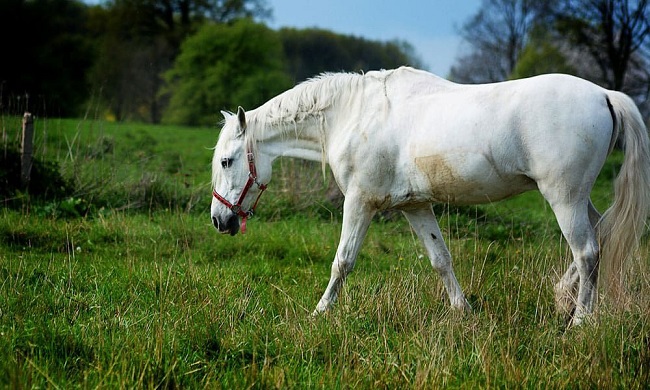
Often in the evaluation of horse health care issues the veterinarian has input from the owner, rider, or trainer pertaining to how the horse is responding under saddle. Being a practicing equine veterinarian who trains and rides athletic horses gives me a unique insight into the interaction between my clients and their horses and the issues or problems they encounter. I ride an average of three to five days per week. The level of that exercise may vary from walking and trotting to galloping, but most often daily exercise is at a fast and relatively strenuous pace. The horses I predominantly ride are actively playing or being prepared for polo; others have retired from the game or are learning the fundamentals of being a riding horse.
This article focuses on how to recognize simple signs of lameness from the ground and from the saddle. In ‘Adam’s Lameness in Horses’, the text on lameness most consulted by veterinarians, Dr. Ted Stashak states that “Lameness is an indication of a structural or functional disorder in one or more limbs that is manifested during progression or in the standing position.” With this definition in mind, lameness can be recognized while the horse is standing or moving. A horse that is not bearing weight on a leg or is pointing a foot is exhibiting an easily recognizable sign of lameness. In equine practice often a client will say that the horse is not feeling right under saddle or is “off”. A discussion of the many possible ways a horse may be “off” when under saddle is beyond the scope of this short article. I will confine my comments to a few things the rider can see & feel which may relate to lameness.
When a horse is lame on the forehand and that lameness is occurring in a single leg, it often exhibits a “head nod” at the trot. This is not to be confused with the normal movement of the head exhibited in the walk. The rider of a horse with a lameness in a single foreleg will feel at the trot uneven movement including a rise in the affected side, a lifting of the head, and intermittently a light feeling or less contact with the rein on that side. Concurrently, a heavy feeling or tensing of the rein on the non-affected side may be noted along with a downward head movement. Some riders describe this as tipping toward the non-affected or sound leg.
Lameness in the hind end is more easily noted by the rider because of the impulsion or forward momentum from the hind legs. A lifting motion is felt when one hind leg remains in the air for a longer time and on the ground for a shorter time than the other hind leg. From the ground this is recognized as a hip hike with one hip rising higher than the other when viewed from behind. The hip rising higher with the leg remaining in the air longer is often the affected or lame leg. The rider may feel an increased lift on the affected side especially when sitting or posting to the trot in a straight line.
The ideas I have presented here regarding forehand and hind end lameness are simple but may give some definition to what a rider describes as a different or unusual “off” feeling to a horse’s gait at the trot. One important aspect of understanding your horse and his wellbeing is to know what normal is. Each horse and each rider are unique, and time spent riding and observing your horse will give you a better concept of what normal is.
Provided by Lee Delaney, D.V.M.
Related Articles & Free Email Newsletter Sign Up
A Guide to Proper Nutrition for Miniature Horses
Identifying and Treating Moon Blindness in Horses
Natural Hoof Care for Horses: A Holistic Approach to Equine Well-Being


Comment here